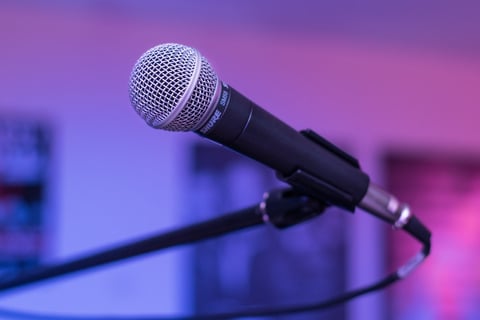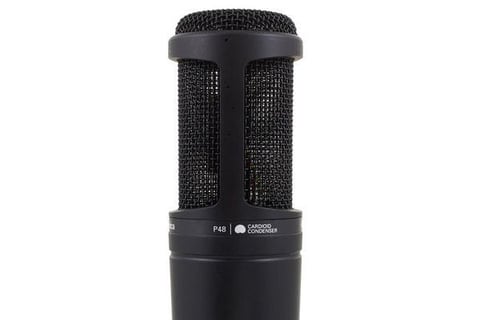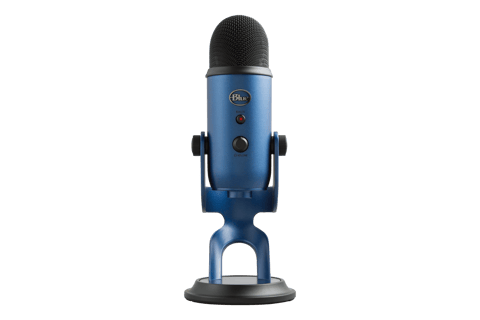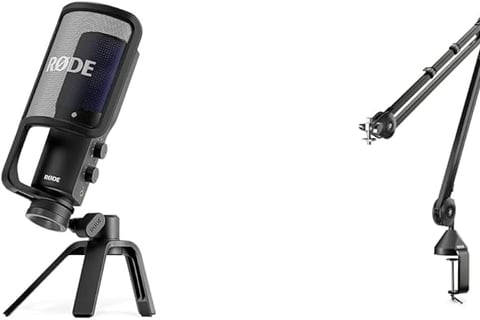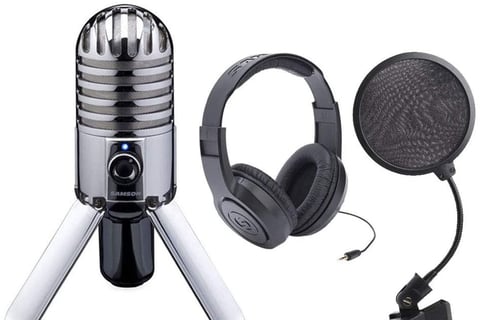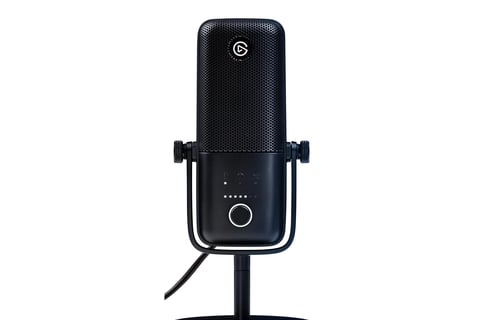Top 5 USB Microphones for Home Studios: Essential Gear for Quality Audio Recording
Choosing the right USB microphone for your home studio can significantly enhance your audio recordings and streamline your workflow. Whether you're recording vocals, instruments, or voice-overs, there's a USB microphone suited to your specific needs and budget. From compact options perfect for travel to feature-rich models designed for multi-purpose use, the market offers a wide range of choices to elevate your home studio recordings.
MICROPHONES
Top 5 USB Microphones for Home Studios: Essential Gear for Quality Audio Recording
Setting up a home studio has become increasingly popular, allowing musicians, podcasters, and content creators to produce high-quality audio from the comfort of their own space. A crucial component of any home studio setup is a reliable USB microphone. These versatile devices offer plug-and-play convenience while delivering professional-grade sound quality.
Choosing the right USB microphone for your home studio can significantly enhance your audio recordings and streamline your workflow. Whether you're recording vocals, instruments, or voice-overs, there's a USB microphone suited to your specific needs and budget. From compact options perfect for travel to feature-rich models designed for multi-purpose use, the market offers a wide range of choices to elevate your home studio recordings.
1) Audio-Technica AT2020USB+
The Audio-Technica AT2020USB+ is a popular choice for home studio enthusiasts. This USB microphone offers excellent sound quality and versatility for various recording applications.
You'll find the AT2020USB+ ideal for podcasting, home music studio, streaming, or voiceovers. Its USB digital output ensures compatibility with both Windows and Mac systems, making setup a breeze.
The microphone delivers crisp and clean audio, capturing your voice or instruments with impressive clarity. You'll appreciate the studio-quality articulation and intelligibility it provides, perfect for singer/songwriters and voice-over artists alike.
A standout feature is the built-in headphone jack with volume control. This allows you to monitor your recordings in real-time without any latency issues.
The AT2020USB+ boasts a cardioid polar pattern, which helps focus on the sound source directly in front of the microphone. This reduces unwanted background noise, ensuring your recordings are clean and professional-sounding.
You'll find the microphone's durable construction reassuring. Its metal body can withstand the rigors of regular use, making it a reliable choice for your home studio setup.
While the initial investment might be comparable to an XLR microphone setup, the AT2020USB+ offers plug-and-play convenience. You can start recording immediately without the need for additional audio interfaces or preamps.
2) Blue Yeti USB Microphone
The Blue Yeti USB Microphone is a versatile and popular choice for home studios. It offers four pickup patterns: cardioid, omnidirectional, bidirectional, and stereo, allowing you to adapt to various recording situations.
You'll find the Blue Yeti's plug-and-play functionality convenient. It's compatible with both PC and Mac, requiring no additional drivers or software to get started. This ease of use makes it ideal for beginners and experienced users alike.
The microphone features a sturdy metal construction and a built-in desk stand. You can easily adjust its position to achieve optimal sound capture. The Blue Yeti also comes in various colors, letting you choose one that matches your studio aesthetic.
Sound quality is where the Blue Yeti shines. It captures clear, rich audio suitable for podcasting, voiceovers, and even music recording. The built-in headphone jack allows for zero-latency monitoring, helping you ensure your recordings sound just right.
On the microphone, you'll find controls for gain adjustment and pattern selection. These on-device controls provide quick access to essential settings, streamlining your recording process. The mute button is another handy feature, especially during live streaming or conference calls.
While not the most compact option, the Blue Yeti's performance and versatility make it a top choice for home studios. Its balance of quality, features, and user-friendliness has made it a staple in many setups.
3) Rode NT-USB
The Rode NT-USB is a professional USB condenser microphone that delivers exceptional performance for home studios. It's versatile enough for recording vocals, instruments, podcasts, and voice-overs.
You'll appreciate its elegant design and premium features, which allow you to sound like a pro with minimal setup. The NT-USB offers impeccable audio quality, making it a top choice for content creators and musicians alike.
This microphone beats many competitors in the under $200 range. Its solid build and durable construction ensure longevity, while its quality components contribute to its superior sound.
You don't need special drivers or additional equipment to use the NT-USB. Simply plug it into your computer, and you're ready to start recording. This ease of use makes it ideal for beginners and experienced users.
The NT-USB comes with a pop filter and desktop stand, adding value to your purchase. You'll also find a headphone output for zero-latency monitoring, allowing you to hear yourself in real-time as you record.
Whether you're recording music, streaming games, or creating podcasts, the Rode NT-USB delivers studio-quality sound from the comfort of your home. Its versatility and performance make it a worthwhile investment for your home studio setup.
4) Samson Meteor Mic
The Samson Meteor Mic is a portable USB studio condenser microphone that offers great value for home studio setups. Its compact size and folding legs make it highly portable, perfect for recording on the go.
You'll appreciate the Meteor Mic's stylish chrome finish and large 25mm diaphragm element. The integrated folding tripod base allows for easy setup and transportation, making it a convenient choice for various recording situations.
This microphone is USB-powered and requires no drivers for use with Windows or Mac OS recording applications. Simply plug it in, and you're ready to start recording your podcasts, music, or voice-overs.
The Meteor Mic is priced affordably at around $69.90, making it an excellent option for those on a budget. While it may not be the absolute best-sounding USB microphone available, it offers good quality for its price point.
You can use the Samson Meteor Mic for a variety of applications, including podcasting, music recording, gaming, Skype calls, and streaming. Its versatility makes it a solid choice for your home studio needs.
The microphone comes with a carrying pouch for added protection during transport. This feature, combined with its compact size, makes the Meteor Mic an ideal travel companion for mobile recording setups.
5) Elgato Wave:3
The Elgato Wave:3 is a premium USB condenser microphone designed for streaming, podcasting, and home studio use. Its sleek design and studio-quality audio make it a top choice for content creators.
You'll appreciate the Wave:3's easy setup, as it's a plug-and-play device compatible with both Mac and PC. The microphone features a cardioid polar pattern, which helps focus on your voice while reducing background noise.
One standout feature is the capacitive mute button on top of the microphone. A light tap is all you need to quickly mute or unmute yourself during recordings or live streams.
The Wave:3 comes with free mixer software, allowing you to fine-tune your audio settings. You can easily adjust levels and apply sound effects to enhance your recordings.
With a frequency response of 70-20,000Hz, this microphone captures a wide range of audio frequencies. This ensures your voice comes through clearly and naturally in your recordings.
The microphone's anti-distortion technology helps prevent audio clipping, even when you're speaking loudly or singing. This feature is particularly useful for maintaining consistent audio quality during dynamic performances.
For those concerned about aesthetics, the Wave:3 is also available in a sleek white version. This option allows you to match the microphone to your studio setup or personal style preferences.
Features to Look for in USB Microphones
When choosing a USB microphone for your home studio, several key factors can significantly impact your recording quality and experience. Consider these essential features to ensure you select a microphone that meets your specific needs and delivers professional-grade results.
Sound Quality
USB microphones come with various polar patterns that affect how they capture sound. The cardioid pattern is popular for rejecting off-axis noise, making it ideal for vocals and instruments. Some mics offer multiple patterns, giving you more versatility.
Look for a microphone with a wide frequency response range to capture both low and high frequencies accurately. A range of 20Hz to 20kHz is standard for professional-grade mics.
Pay attention to the sample rate and bit depth. Higher values like 24-bit/96kHz provide better audio resolution and dynamic range.
Many USB mics now include built-in digital signal processing (DSP) to enhance sound quality. Features like adjustable gain and DSP processing can help you customize your sound.
Connectivity Options
USB-C is becoming the standard for modern devices, offering faster data transfer and more reliable connections. Check if the microphone is compatible with your computer's USB ports.
Some microphones offer dual connectivity with both USB and XLR outputs. This versatility allows you to use the mic with audio interfaces or mixers as your setup grows.
Look for mics with zero-latency monitoring through a headphone jack. This feature lets you hear yourself in real-time without delay.
Check if the microphone is plug-and-play or requires additional drivers. Plug-and-play options are generally more convenient for quick setups.
Build and Durability
A sturdy metal construction ensures your microphone can withstand regular use and potential accidents. Avoid plastic bodies if possible, as they're less durable.
Check the microphone's weight and size. Heavier mics often indicate better build quality, but ensure it's compatible with your mic stand or boom arm.
Look for shock mount compatibility to reduce unwanted vibrations and handling noise. Some mics come with built-in pop filters or windscreens to improve sound quality.
Consider the warranty and customer support offered by the manufacturer. A longer warranty period can provide peace of mind and protection for your investment.
Optimizing Your Home Studio Setup
Creating an ideal recording environment enhances the quality of your USB microphone recordings. Proper acoustic treatment, microphone placement, and compatible software are key elements to achieve professional-sounding results.
Acoustic Treatment
Acoustic treatment is crucial for reducing unwanted reflections and echoes in your recording space. Start by identifying problem areas where sound bounces off hard surfaces.
Add bass traps in room corners to control low-frequency buildup. Place acoustic panels on walls to absorb mid and high frequencies. Consider using diffusers to scatter sound waves and create a more balanced acoustic environment.
Thick curtains or blankets can serve as budget-friendly alternatives to commercial acoustic panels. For your desk area, use a reflection filter behind your USB microphone to minimize room reflections.
Remember, the goal is to create a dry, controlled space that allows your microphone to capture clean audio without interference from room acoustics.
Microphone Placement
Proper microphone placement significantly impacts recording quality. For vocal recordings, position yourself 6-12 inches away from the microphone. This distance helps prevent proximity effect and allows for natural sound capture.
Use a pop filter to reduce plosives and sibilance. Place it 2-3 inches in front of the microphone. Experiment with off-axis positioning to find the sweet spot for your voice.
For instruments, each requires a unique approach:
Acoustic guitar: Aim the mic at the 12th fret, about 6-12 inches away
Electric guitar amp: Point the mic slightly off-center of the speaker cone
Drums: Use multiple mics for full kit or a single overhead for basic recording
Always trust your ears and adjust as needed. Recording needs and preferences vary, so don't be afraid to experiment with different placements.
Recording Software Compatibility
Ensure your chosen USB microphone is compatible with your preferred recording software. Most modern USB mics work seamlessly with popular Digital Audio Workstations (DAWs) like GarageBand, Audacity, or Reaper.
Check your microphone's driver requirements. Some USB mics may need specific drivers for full functionality. Install the latest versions to avoid compatibility issues.
Adjust your software's audio settings to recognize the USB microphone as the input device. Set appropriate sample rates and bit depths for optimal recording quality. Typically, 44.1 kHz/16-bit is sufficient for most home studio applications.
Explore your software's features like real-time monitoring and effects processing. These can enhance your recording workflow and allow for immediate audio feedback during performances.
